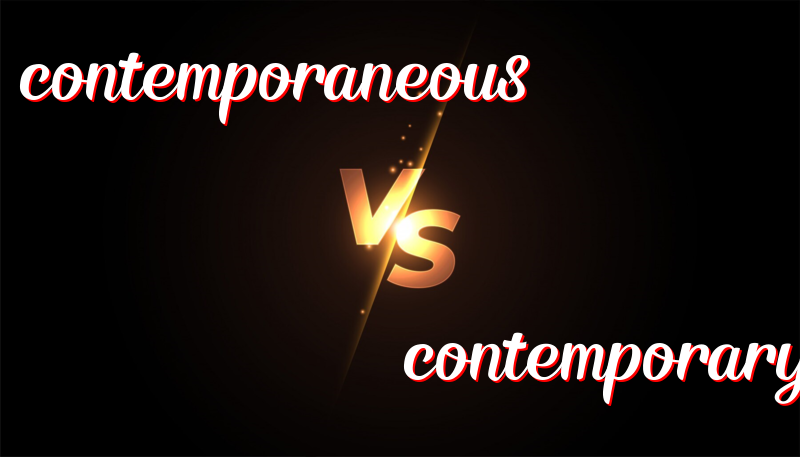Title: Understanding the Difference: Contemporaneous vs. Contemporary
Contemporaneous versus Contemporary
Contemporaneous means happening at the same time, while contemporary means belonging to the same time period.
History:
Contemporaneous comes from the Latin word “con-” meaning “together” and “temporarius” meaning “of time”. Contemporary comes from the Latin words “con-” and “temporaneus” meaning “belonging to the times”.
How to use them:
– Contemporaneous: used to describe events or things that occur at the same time.
– Contemporary: used to describe things that belong to the same time period.
Trick to Remember the Difference:
Remember that “contemporaneous” has the word “tempo” in it, which relates to time. This can help you recall that it refers to things happening at the same time.
Contemporaneous Example Sentences:
1. The two artists were contemporaneous, both exhibiting their work at the same gallery.
2. The construction of the two buildings was contemporaneous, with both projects starting in 2010.
3. The two novels were contemporaneous, each depicting life in the 1920s.
4. The speeches of the two leaders were contemporaneous, both delivered on the same day.
5. The peace treaties signed by the countries were contemporaneous, aiming to end the conflict simultaneously.
Contemporary Example Sentences:
1. The contemporary design of the building stands out in the historic town.
2. The artist’s work is considered contemporary, reflecting modern trends.
3. The contemporary music festival features new and upcoming artists.
4. The play is a contemporary take on a classic story, set in modern times.
5. The contemporary dance performance showcases innovative choreography.
Summary:
Contemporaneous is used to describe things happening at the same time, while contemporary describes things belonging to the same time period. Remember “contemporaneous” for events occurring together and “contemporary” for things from the same era.

This article clearly explains the difference between “contemporaneous” and “contemporary,” providing useful historical context and a memory trick to help readers better understand and use these terms.